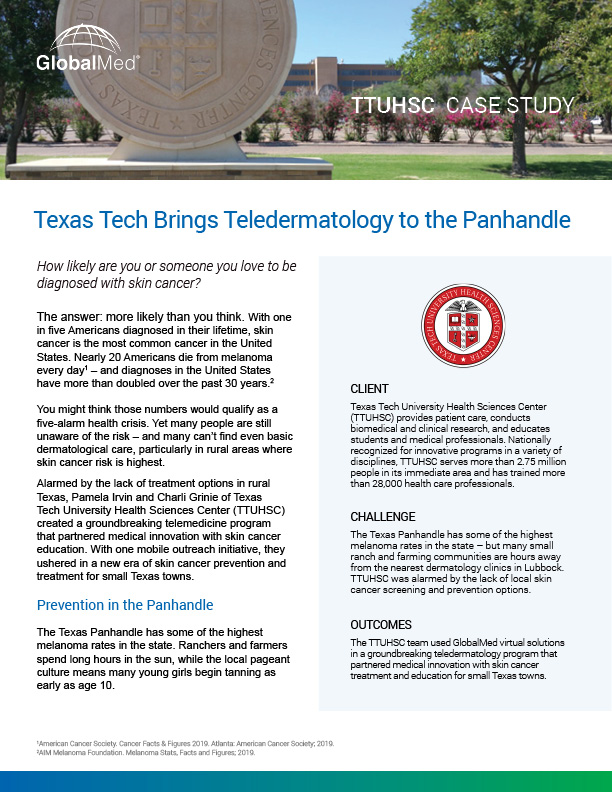
Nearly 20 Americans die from melanoma every day. That’s a dire statistic and a frustrating one, given that the five-year survival rate for people whose melanoma is detected and treated early is 99 percent. Skin cancer screenings can undoubtedly save lives – but only when patients are aware of their risk and able to receive dermatological care. Unfortunately many people lack access to skin cancer prevention resources or the right providers.
That’s where teledermatology comes in – fusing the life-saving power of melanoma screenings with telemedicine’s ability to reach the underserved, as our latest case study explains.
New Options for Treatment
One of the great benefits of virtual care is that medical teams can transcend the constraints of brick and mortar facilities. By partnering ingenuity with the right technology, they can often triumph over typical barriers and create new paths to treatment. Pamela Irvin and Charli Grinie of the Texas Tech University Health Sciences Center (TTUHSC) surgery team achieved exactly that when tackling the high skin cancer rates in the Texas Panhandle.
Community ranchers and farmers were often exposed to the sun, while local girls tanned regularly to compete in pageants. The nearest dermatology clinics could be three or four hours away and appointments had to be booked as far as a year in advance – assuming patients were even aware they needed an appointment. Many were not.
As Grinie said, “People were dying of melanoma just from lack of education. These communities were losing family members because a small spot wasn’t checked for years.”
Building a Culture of Prevention
To make screenings more accessible, Grinie and Irvin launched a groundbreaking teledermatology program using GlobalMed’s Transportable Exam Station (TES) unit, TotalExam® 3 camera and Variable Polarizing Hood (VPH). The TTUHSC team partnered with local clinics in small towns to bring mobile screenings that could quickly get local residents in and out, no travel required. They also worked with school districts to install sunscreen dispensers and share prevention tips with students.
The TTUHSC teledermatology program has been life changing. The team has been able to save patients’ lives and change the thinking of entire communities regarding skin cancer risk and treatment. “It’s changed entire towns,” Grinie said. “They know we’ve got this innovative new technology, it can save their life and it’s coming to their community.”
It’s not often you hear a positive story about skin cancer, but the telemedicine world is full of innovative programs that can transform outcomes on a wide scale. Get our case study to learn more about the power of teledermatology and the other programs TTUHSC has planned.

